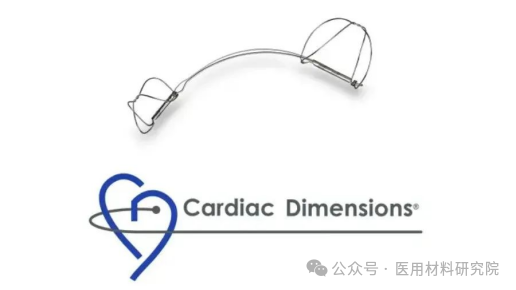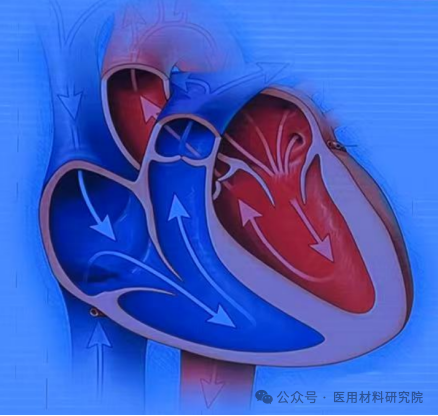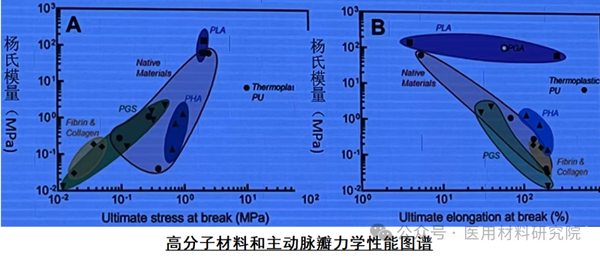**Translated Content:** Heart Valve Material Analysis: Guarding the Heart's "Gate of Life" In the intricate world of medical device materials, the analysis of heart valve materials holds pivotal importance, especially as these components act as the vital gatekeepers to the heart — its "Gate of Life." This translation retains the essence and technical precision of the original Chinese text, making it accessible to English-speaking audiences engaged with cardiovascular medical device research and development.
Recently, cardiac valve repair system developer cardiac Dimensions announced that it has completed an oversubscribed Series E funding of $53 million (approximately 38.3 million RMB), with Ally Bridge Group leading the investment.

In the field of medicine, heart valve diseases have long been a significant threat to human life and health. The development and application of artificial heart valves have brought new hope to many cardiac patients. The performance of artificial heart valve materials directly affects their long-term stability in the body and the treatment effects on patients. Today, we will delve into an in-depth analysis of artificial heart valves and their commonly used materials.
The Importance of Heart Valves and Current Disease Status
Heart valves are "biological valves" that control the unidirectional flow of blood, preventing backflow and maintaining circulatory dynamics, acting like precise "gateways to life" that regulate the direction of blood flow within the heart. They ensure that blood circulates in the correct order between the heart's four chambers, providing sufficient oxygen and nutrients to various organs and tissues in the body. However, due to factors such as congenital genetic issues, infections, and degenerative changes, heart valves may develop lesions, such as stenosis or regurgitation. These conditions can severely affect heart function, potentially leading to serious consequences like heart failure.

Traditional surgical treatment primarily involves open-heart surgery for valve replacement, commonly using mechanical valves (mainly stainless steel and titanium) and bioprosthetic valves (mainly porcine aortic valves and cow pericardium). Mechanical valves have good durability, but patients must take anticoagulant medications for extended periods, posing risks of bleeding.
Therefore, developing a new valve material that can both mimic the function of natural heart valves and overcome the limitations of existing valve materials has become an important direction for medical research, leading to the emergence of biomimetic heart valve materials.
The Secrets of Biomimetic Valve Materials—Bioactive Biomimetic Design
The core of the biomimetic valve materials lies in their bioactive biomimetic design. Scientists have conducted in-depth studies on the structure and function of natural heart valves, discovering that the extracellular matrix of natural valves has a complex hierarchical structure and rich bioactive components. These components are crucial for maintaining cell survival, proliferation, and differentiation, providing important support for the function of the valve. Therefore, biomimetic valve materials typically incorporate bioactive components similar to those found in natural heart valves, such as collagen and glycosaminoglycans, and construct them within the materials through specific processes.
For example, some biomimetic valve leaflet materials prepared using electrospinning technology to create nano-fiber scaffolds can simulate the natural fiber structure of the valve, providing a good microenvironment for cell adhesion, migration, and proliferation. This nano-fiber scaffold can also load growth factors and other bioactive molecules, further promoting cell growth and differentiation, enabling the valve tissue to better integrate with the human body's own tissues.
Research Progress and Clinical Applications of Biomimetic Valve Materials
Four key properties of ideal valve materials include: 1. Zero friction 2. High flow rate 3. Selective permeability 4. Low pressure drop
1) Mechanical properties similar to those of native valve leaflets;
2) Excellent anti-calcification properties;
3) Excellent biocompatibility;
4) Stable durability performance (40 million operations per year).

Through persistent exploration of high polymers such as PLA, PHA, researchers in the field have made significant breakthroughs in the study of bioprosthetic valve materials. In laboratory research, scientists have successfully prepared various bioprosthetic valves with good biocompatibility and mechanical properties, and have validated them in small animal models. These studies indicate that bioprosthetic valves can integrate well with surrounding tissues, reduce immune rejection reactions, while maintaining good valve function.
In clinical applications, although biomimetic valve materials have not completely replaced traditional valve materials, there have been some clinical trials and early application cases. Some patients have shown good recovery and significant improvement in heart function after undergoing surgery with biomimetic valve materials.
Heart valve biomimetic materials as an important innovation in the field of heart valve disease treatment possess broad development prospects. In the future, the continuous development and innovation of artificial heart valve materials will provide more options and hope for the treatment of heart disease patients.
【Copyright and Disclaimer】The above information is collected and organized by PlastMatch. The copyright belongs to the original author. This article is reprinted for the purpose of providing more information, and it does not imply that PlastMatch endorses the views expressed in the article or guarantees its accuracy. If there are any errors in the source attribution or if your legitimate rights have been infringed, please contact us, and we will promptly correct or remove the content. If other media, websites, or individuals use the aforementioned content, they must clearly indicate the original source and origin of the work and assume legal responsibility on their own.
Most Popular
-

Dow, Wanhua, Huntsman Intensively Raise Prices! Who Controls the Global MDI Prices?
-

Clariant Unveils Cost-Cutting Plan Details, Plans to Shut Down Multiple Plants
-

[Today's Plastics Market] General Materials Weakly Fluctuate, Engineering Materials Steadily Rise
-

New Breakthrough in Domestic Adiponitrile! Observing the Rise of China's Nylon Industry Chain from Tianchen Qixiang's Production
-

Daily Review: Polyethylene Prices Under Weak Consolidation, Sellers Face Significant Pressure to Move Inventory






